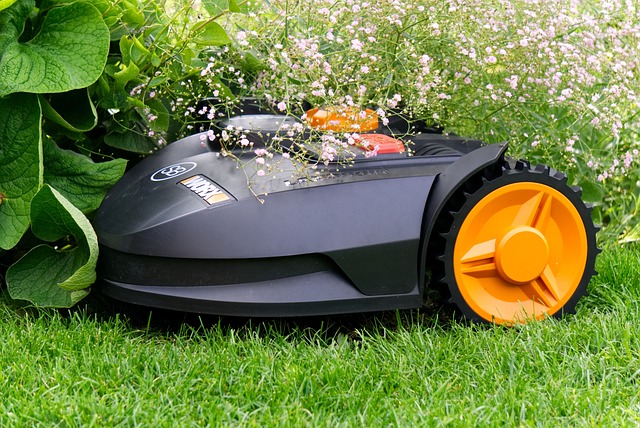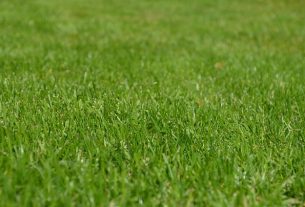Lawn care is essential for landscaping design, creating visually stunning and functional outdoor spaces. Regular lawn care practices like mowing, fertilizing, and weed control ensure healthy grass that serves as a vibrant centerpiece, complementing other elements like flower beds and water features. Properly maintained lawns enhance the overall aesthetics and value of properties, becoming the envy of neighborhoods. Different grass types require tailored care, with varieties suited for various climates, and techniques such as mulching and aeration further improving lawn health and visual appeal.
Transform your outdoor space into a vibrant, functional oasis with landscaping design! This comprehensive guide explores the art of Lawn Care and its pivotal role in shaping your landscape. From understanding grass varieties and optimal care to crafting visually stunning designs, we cover it all. Learn how to create outdoor living spaces that thrive with efficient irrigation and regular maintenance tips. Discover the secrets to a flourishing landscape that becomes the heart of your home.
- Understanding Lawn Care and Its Role in Landscaping
- – The significance of lawn care in overall landscaping
- – Different types of grass and their care requirements
Understanding Lawn Care and Its Role in Landscaping

Lawn care is an integral component of landscaping design, playing a pivotal role in transforming outdoor spaces into lush, inviting environments. It involves a range of activities aimed at maintaining and enhancing grass health, ensuring it becomes the vibrant centerpiece of any landscape. Proper lawn care practices not only contribute to aesthetics but also support the overall resilience and longevity of landscaping features.
Effective lawn care strategies include regular mowing, fertilizing to promote healthy growth, and controlling weeds and pests. These practices create a robust foundation for the landscape, enabling the integration of other design elements such as flower beds, patios, and water features. By prioritizing lawn care, landscapers can ensure that grass remains dense, green, and well-manicured, serving as a harmonious backdrop to the overall aesthetic and functional appeal of the outdoor space.
– The significance of lawn care in overall landscaping

Maintaining a healthy lawn is an integral part of successful landscaping design. Beyond providing a visually appealing base, lawns serve as a vital component in unifying various elements of a landscape. Regular lawn care practices, including mowing, fertilizing, and irrigation, ensure that grass remains lush and vibrant, creating a harmonious backdrop for plants, trees, and other features. A well-cared-for lawn enhances the overall aesthetic appeal of a property, increasing its curb appeal and contributing to a pleasant outdoor living space.
Effective lawn care is also essential for addressing potential issues like weed growth, pest infestations, and disease. Proactive management through proper mowing heights, timely application of fertilizers and pesticides, and adequate watering helps maintain a robust and resilient lawn capable of withstanding environmental challenges. By prioritizing lawn care as an integral part of landscaping implementation, property owners can achieve a beautiful, functional, and long-lasting outdoor space that becomes the envy of the neighborhood.
– Different types of grass and their care requirements

When it comes to landscaping design, grass is an essential element that contributes to both aesthetic appeal and functionality in outdoor spaces. There are numerous varieties of grass, each with distinct characteristics and care needs. For instance, cool-season grasses like Kentucky Bluegrass and Fescues thrive in lower temperatures, making them ideal for lawns in temperate climates. Conversely, warm-season grasses such as Bermuda Grass and Zoysia are better suited to warmer regions and can handle higher foot traffic.
Proper lawn care is crucial for maintaining a healthy and vibrant landscape. Regular mowing, watering, and fertilizing are fundamental practices. Different grass types require specific mowing heights and frequencies, with some preferring a slightly longer cut to encourage thick growth. Watering needs vary too; some grasses demand consistent moisture, while others are more drought-tolerant. Incorporating suitable landscaping techniques, such as mulching or aeration, can further enhance the health and appearance of your lawn, ensuring it becomes a stunning focal point in your outdoor landscape design.
Incorporating effective lawn care practices is an integral part of successful landscaping design. Understanding the role of different grass types and their specific care needs ensures a lush, well-maintained outdoor space. By balancing lawn care with creative landscaping implementation, you can transform your yard into a vibrant and harmonious environment that enhances your home’s aesthetic appeal and increases its value. Remember, proper upkeep is key to preserving the beauty of both your lawn and overall landscape design.



